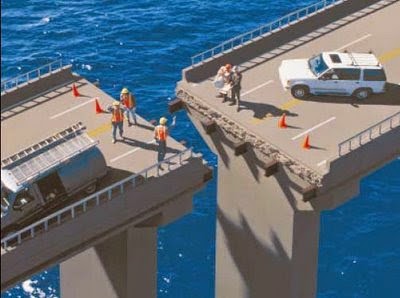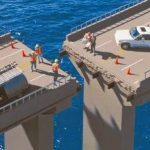
 I have the pleasure of working on large infrastructure projects. I enjoy the work and very much appreciate the challenge of getting a large infrastructure project team up and running and working towards being a high performing team. It requires designers, constructors, sub-contractors, clients and other parties to come together, align and work as one team.
I have the pleasure of working on large infrastructure projects. I enjoy the work and very much appreciate the challenge of getting a large infrastructure project team up and running and working towards being a high performing team. It requires designers, constructors, sub-contractors, clients and other parties to come together, align and work as one team.
Early on in the project, the focus is on design. It is critical that we get this right given the downstream impacts it has on the rest of the project. We get design wrong, it costs us money, rework and other costs that multiply during the construction stage and operational stage of a project. Design has an enormous impact on the rest of a project yet it is a relatively small cost. It generally accounts for 4-6% of a large infrastructure project yet often accounts for a significant amount of the grief in delivering on time and on budget. By getting the design completed to higher quality standards and on time, you create a great opportunity to reduce construction, maintenance and operations and ensure the asset being constructed achieves better value for money over the whole life.
Designers often do not naturally and are not enabled to step back and take a bigger picture, more strategic systems view of the design on which they are working. This means they may not consider risks and opportunities (such as community perspectives, new technology, cumulative environmental impacts) that could drive better design and avoid issues during construction such as project stoppages due to a loss of social licence to operate. Early engagement with non-traditional stakeholders during design, through mechanisms such as co-design workshops, can have a game changing impact on project delivery (particularly time and cost savings), and the final value generated for the client.
This sounds great in theory but in the last six years of being an alliance and project coach, I have not seen yet a design delivered on time or undertaken in a manner that sets up the rest of the project for success. Instead, the project tends to chase or try to catch up the delay that has occurred in the design stage which tends to compromise high performance and successful project outcomes. This may sound harsh but if you reflect on your projects, I suspect you would have a similar view.
Further to this, most projects I have seen have strained relationships between design and construction and it is a two way problem. The constructors are keen to get information quickly but then utilise it in a manner of passing unnecessary or misunderstood risk to the designer. The designer is fearful of claims, cautious, and risk adverse which are not a good combination of behaviours when you are driving challenging outcomes.
In working this through, let’s analyse what goes wrong with design teams on large infrastructure projects. Some of the common themes I see are as follows:
- Designers can tend to over engineer drawings, deliverables and processes in particular at the tender stage. Rather than providing a fit for purpose outcome for what is needed, there is a tendency to design the “Rolls Royce” rather than the “Commodore” which leads to time delays and more work that is often not needed;
- The tender design phase is a critical stage for the designer as it represents significant risk in that they get paid a small amount with a significant reliance being placed on their work by constructors. This sets up the award and project delivery for potential significant risk is the appropriate time has not been spent to deliver the right outcomes;
- Designers tend to struggle with communicating the impacts of what they are doing. They can tend to be highly technical, task focussed and introverted which means communication is not something that always comes naturally particularly with other people outside the design team. This extends to not asking for or receiving visibility around the construction programme or deliverables expected until late in the piece;
- Accountability can sometimes tend to be a dirty word within design teams. Meeting dates and timeframes tend to be a challenge and there is often a perception that dates and timeframes can be adjusted. The problem with this thinking is that for every day we are late on design, it is costing an enormous amount of money in construction. People, plant, equipment and sub-contractors are all delayed which costs significant sums of money downstream on the project in comparison to the design costs. The thinking needs to be shifted from the delay or extra design costs to the impact on the overall project budget because other people cannot start to build, can’t rely on the design nor meet the programme;
- Outcomes are not always front of mind when the design is started. This is why I am a huge advocate of design teams going on site to view what they are planning to design and others are to build, designers co-existing with constructors to challenge the design and thinking about the outcome rather than the inputs;
- Deliverables are not always clearly defined up front for the designers. What is really needed as opposed to nice to have? What are the minimum requirements we need to meet or can challenge if not necessary? Who are the key people that will review these deliverables are all questions that should be asked and clarified up front;
- When you have more than one designer, you need one to own the overall design process rather than all being equal partners. The problem with equal partners around design is no one takes overall ownership for delivery. This means dates, deliverables and the like fly by while discussion ensues that adds no value to the outcome we are looking to achieve which is a suitable quality design that is able to be built and operated effectively;
- Design constructability is not always a focus. Is our design workable? Have we given some thought to involving construction early to really challenge our work, assumptions and inputs? This important point is critical in ensuring those that are going to use the drawings are happy with them and get the opportunity to add value early;
- Designers often don’t understand the big picture, the commercial imperatives of the project and how their piece of the puzzle fits. It is critical that we educate them around these key areas and link it commercially to the outcomes we are looking to achieve; and
- There is often too much consultation around design. Once you get to a point in the design process, marginal gains from changes are outweighed by the time and cost impacts on the overall project. The discipline to say no to these minor changes is an important skill for design to have.
Before people think I am being critical of designers generally for the sake of it, I used to manage an engineering design organisation so I appreciate the challenges. I also think both designers and constructors are both to blame for this challenge. Designers need to stand up and challenge and have the difficult conversations from the start and be accountable for delivery. Constructors need to understand the behaviours that the commercial model and lack of clarity around risk allocation drives from designers when it is not well understood.
We need to collectively stop making excuses around this and really challenge our thinking around how we get design to be the enabler rather than the problem child. I personally think we even need to revisit the commercial arrangements and heavily incentivise design houses from selling time to rewarding on time performance, quality fit for purpose deliverables and how well they interface with other parts of projects. The design houses that move to this model would do extremely well in my opinion and would be welcomed by contractors, clients and sub-contractors.
To conclude this blog, the real eye opener was at a board meeting where a senior representative from a design house made the comment that he felt the design was going well because it was only 12 months late. It took all my will to not explode with frustration given the impact on the project due to this delay. However, it gave me a great appreciation of the challenge we face in really shifting design from being a process or input to a project to it being a step in a project that either sets us up for success or creates an anchor we struggle to pull up that holds us back from delivering high performance infrastructure projects.



